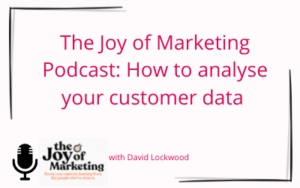The Autumn-Winter season is an important period for customer acquisition, since it includes Black Friday, Cyber Monday and the general lead-up to Christmas. AW20 was, of course, exceptional in many ways, with the pandemic providing a boom for online retail while halting high street sales in one fell swoop. But with social restrictions behind us, 2021 has brought new factors for consideration.
Perhaps most notably, haulier shortages have wreaked havoc on supply chains, with UK retail prices expected to rise as a result. This could be an advantage for some retailers, however, who have reported having more stock than needed this season and likely won’t feel the effects of the haulage issues. This, in turn, will enable them to be more competitive this season as rival retailers begin to put up their prices.
As brands face another unique Autumn-Winter season, they need to consider which aspects of their acquisition plan should change, and which should remain the same. David Lockwood, our Insight Director, discussed key strategies with some of the UK’s leading multi-channel brands during our latest Retail Leaders Forum.
1. Timing is everything
Some retailers, such as those in fashion, need to consider whether Black Friday marks the beginning of a sales season which continues until Christmas, or whether to break this up into two distinct periods in the retail calendar.
After a decade of Christmas trading moving later in the year – where shoppers could browse in-store while also having online as a back-up – 2020 bucked the trend. During the lockdowns, consumers did their Christmas shopping earlier to make sure they got in before stock ran out.
It remains to be seen exactly how consumers will behave during the 2021 Christmas period, but even the mention of haulage problems in the media may prompt many to buy early again. In any case, as well as internally allowing for stock delays, retailers should also advise customers if delivery delays are likely. This will help manage their expectations, and foster loyalty at the same time.
It’s also important to understand the difference between the value of customers recruited during the Autumn/Winter months versus those in the Spring/Summer months – and to compare these to their corresponding recruitment costs.
2. Choose the right level of discount
Due to reduced trading in August and September, we are expecting some deeper Black Friday promotions than last year as retailers try to sell their excess stock. Also, since consumers are expecting price rises, they may take more advantage of discounts, and purchase the big-ticket items earlier.
For some, Black Friday has become a week-long promotional period, and so it can be a great time to recruit. But how does their LTV compare to customers recruited at other times in the year? Are these customers simply deal hunters, or are they likely to become loyal customers? Therefore, it’s important to calculate whether increased acquisition costs due to discounts are offset by new customers’ LTV. By analysing previous customer data, retailers can predict the likely return on investment before deciding how heavily to discount items.
One premium lingerie brand, which historically offered deep discounts on Black Friday, found that markdown customers had a much lower LTV. They have since reduced the amount of discount they offer around Black Friday and improved profit margins as a result.
Many of the luxury retailers present, such as a cashmere clothing company, don’t offer many discounts due to long-term brand detriment, but see uplift in sales due to the activity of other brands.
3. Create unique promotions
If brands expect to participate in Black Friday, they need to stand out from the crowd. However, this doesn’t necessarily need to relate to the level of discount offered, since engagement can be achieved through more creative marketing campaigns, or unique deals, for example. One stationery retailer is offering multibuy bundles to attract customers, while a sustainable clothing company is planning to use Black Friday as an opportunity to communicate their green values, appealing to consumers’ ethics instead of their budget.
So, it seems that for some brands, who have traditionally asked the question ‘How do I make the most of Black Friday?’, they are now asking ‘Should I be taking part in Black Friday at all?’. Whatever Black Friday means for retailers this year, getting the timing right, and rolling out more creative campaigns, will be key to their success.
In our next post, we’ll discuss how to overcome potential obstacles to acquisition across both offline channels (print and paper) and online channels (paid search) this season.




